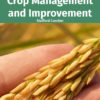Environmental stresses play crucial roles in the productivity, survival and reproductive biology of plants as well as crops. Plants are subjected to many forms of environmental stress, which can be included into two broad areas: abiotic and biotic. The non-living variable must influence the environment beyond its normal range of variation to adversely affect the population performance or individual physiology of the organism in a significant way. Whereas a biotic stress would include such living disturbances as fungi or harmful insects, abiotic stress factors, or stressors, are naturally occurring, often intangible, factors such as intense sunlight or wind that may cause harm to the plants and animals in the area affected. Abiotic stress is essentially unavoidable. Abiotic stress affects animals, but plants are especially dependent on environmental factors, so it is particularly constraining. Abiotic stress is the most harmful factor concerning the growth and productivity of crops worldwide. Research has also shown that abiotic stressors are at their most harmful when they occur together, in combinations of abiotic stress factors. Epigenetic regulation is essential for growth and development in eukaryotic organisms and is also responsible for the establishment, maintenance, and reversal of non-genetic cellular memory that records developmental and environmental cues, including those arising from biotic and abiotic stress. Understanding of plant responses in relation with abiotic and biotic stresses is an important issue of concern not only because of yield loss but also because quality and longevity of plants are equally important for some crops not grown for food. In agriculture system loss of yield is taken as the final parameter of plant stress that shows the economic impact of stress. Even in natural systems it is more important to understand the physiology of plants in response to various types of abiotic and biotic stresses.
This volume represents a general overview of the major mechanisms developed by plants to tolerate environmental stresses, both abiotic (drought, high temperature, chilling and freezing, UV-B radiation, salinity and heavy metals) and biotic stress which includes physiology of plant-pathogen interaction, various ways through which pathogen invade the host tissues and many others. Clear understanding of physiological interaction of an organism with its environment is necessary to answer how competition, herbivory, and disease affect individual plants, plant processes, plant population and finally crop productivity. Consequently, basic knowledge of plant physiology leads to the foundation of developing plant species that are capable of withstanding stressful environment.













